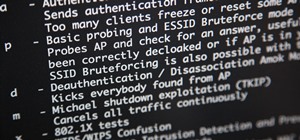So I had Word opened and Microsoft AutoUpdate ran and I saw that there were updates to install. Being curious as I was, I went to the link listed about the "security update" and saw that there were exploits that allowed for the possibility of remote code execution in various versions of Excel. To see the table showing which are exploitable, check this link out. That is where I also found the two CVE numbers that were associated with the version of Excel that I'm running: Excel 2016 for Mac. I went to exploit-db.com to check out the CVE's listed: CVE-2015-2520 and CVE-2015-2523. Being the curious type I am, I downloaded the linked files and saw that they were excel files. Tried opening them, but Excel just warned me saying that they were corrupt or that there may be some missing data; no crashes. I'm still pretty new to this world but I'm wondering, does that just mean that my Excel is vulnerable but requires a different approach than what was done with the sample on db-exploit? Or does it just mean that it could be OS specific (I'm running OS X 10.11 which has added a lot of extra security features)? I'm also wondering how an exploit like this is made, is this something you can do with a hex editor? And how might you take something like this and insert a payload?
- Hot
- Active
-
 Forum Thread:
HACK ANDROID with KALI USING PORT FORWARDING(portmap.io)
12
Replies
Forum Thread:
HACK ANDROID with KALI USING PORT FORWARDING(portmap.io)
12
Replies
2 days ago -
 Forum Thread:
Hydra Syntax Issue Stops After 16 Attempts
2
Replies
Forum Thread:
Hydra Syntax Issue Stops After 16 Attempts
2
Replies
3 wks ago -
 Forum Thread:
Hack Instagram Account Using BruteForce
208
Replies
Forum Thread:
Hack Instagram Account Using BruteForce
208
Replies
3 wks ago -
 Forum Thread:
Metasploit reverse_tcp Handler Problem
47
Replies
Forum Thread:
Metasploit reverse_tcp Handler Problem
47
Replies
2 mo ago -
 Forum Thread:
How to Train to Be an IT Security Professional (Ethical Hacker)
22
Replies
Forum Thread:
How to Train to Be an IT Security Professional (Ethical Hacker)
22
Replies
2 mo ago -
 Metasploit Error:
Handler Failed to Bind
41
Replies
Metasploit Error:
Handler Failed to Bind
41
Replies
2 mo ago -
 Forum Thread:
How to Hack Android Phone Using Same Wifi
21
Replies
Forum Thread:
How to Hack Android Phone Using Same Wifi
21
Replies
3 mo ago -
 How to:
HACK Android Device with TermuX on Android | Part #1 - Over the Internet [Ultimate Guide]
177
Replies
How to:
HACK Android Device with TermuX on Android | Part #1 - Over the Internet [Ultimate Guide]
177
Replies
3 mo ago -
 How to:
Crack Instagram Passwords Using Instainsane
36
Replies
How to:
Crack Instagram Passwords Using Instainsane
36
Replies
3 mo ago -
 Forum Thread:
How to Hack an Android Device Remotely, to Gain Acces to Gmail, Facebook, Twitter and More
5
Replies
Forum Thread:
How to Hack an Android Device Remotely, to Gain Acces to Gmail, Facebook, Twitter and More
5
Replies
3 mo ago -
 Forum Thread:
How Many Hackers Have Played Watch_Dogs Game Before?
13
Replies
Forum Thread:
How Many Hackers Have Played Watch_Dogs Game Before?
13
Replies
3 mo ago -
 Forum Thread:
How to Hack an Android Device with Only a Ip Adress
55
Replies
Forum Thread:
How to Hack an Android Device with Only a Ip Adress
55
Replies
4 mo ago -
 How to:
Sign the APK File with Embedded Payload (The Ultimate Guide)
10
Replies
How to:
Sign the APK File with Embedded Payload (The Ultimate Guide)
10
Replies
4 mo ago -
 Forum Thread:
How to Run and Install Kali Linux on a Chromebook
18
Replies
Forum Thread:
How to Run and Install Kali Linux on a Chromebook
18
Replies
5 mo ago -
 Forum Thread:
How to Find Admin Panel Page of a Website?
13
Replies
Forum Thread:
How to Find Admin Panel Page of a Website?
13
Replies
6 mo ago -
 Forum Thread:
can i run kali lenux in windows 10 without reboting my computer
4
Replies
Forum Thread:
can i run kali lenux in windows 10 without reboting my computer
4
Replies
6 mo ago -
 Forum Thread:
How to Hack School Website
11
Replies
Forum Thread:
How to Hack School Website
11
Replies
6 mo ago -
 Forum Thread:
Make a Phishing Page for Harvesting Credentials Yourself
8
Replies
Forum Thread:
Make a Phishing Page for Harvesting Credentials Yourself
8
Replies
6 mo ago -
 Forum Thread:
Creating an Completely Undetectable Executable in Under 15 Minutes!
38
Replies
Forum Thread:
Creating an Completely Undetectable Executable in Under 15 Minutes!
38
Replies
7 mo ago -
 Forum Thread:
Hacking with Ip Only Part [1] { by : Mohamed Ahmed }
5
Replies
Forum Thread:
Hacking with Ip Only Part [1] { by : Mohamed Ahmed }
5
Replies
8 mo ago
-
 How To:
Scan for Vulnerabilities on Any Website Using Nikto
How To:
Scan for Vulnerabilities on Any Website Using Nikto
-
 How To:
Dox Anyone
How To:
Dox Anyone
-
 How to Hack Wi-Fi:
Stealing Wi-Fi Passwords with an Evil Twin Attack
How to Hack Wi-Fi:
Stealing Wi-Fi Passwords with an Evil Twin Attack
-
 Hack Like a Pro:
How to Find Directories in Websites Using DirBuster
Hack Like a Pro:
How to Find Directories in Websites Using DirBuster
-
 How To:
Use Burp & FoxyProxy to Easily Switch Between Proxy Settings
How To:
Use Burp & FoxyProxy to Easily Switch Between Proxy Settings
-
 How To:
Exploit EternalBlue on Windows Server with Metasploit
How To:
Exploit EternalBlue on Windows Server with Metasploit
-
 Tutorial:
Create Wordlists with Crunch
Tutorial:
Create Wordlists with Crunch
-
 Hacking Windows 10:
How to Dump NTLM Hashes & Crack Windows Passwords
Hacking Windows 10:
How to Dump NTLM Hashes & Crack Windows Passwords
-
 How To:
Hack Wi-Fi Networks with Bettercap
How To:
Hack Wi-Fi Networks with Bettercap
-
 How To:
Advanced Techniques to Bypass & Defeat XSS Filters, Part 1
How To:
Advanced Techniques to Bypass & Defeat XSS Filters, Part 1
-
 How To:
Make Your Own Bad USB
How To:
Make Your Own Bad USB
-
 How To:
Find Passwords in Exposed Log Files with Google Dorks
How To:
Find Passwords in Exposed Log Files with Google Dorks
-
 How To:
Crack Shadow Hashes After Getting Root on a Linux System
How To:
Crack Shadow Hashes After Getting Root on a Linux System
-
 How To:
Brute-Force FTP Credentials & Get Server Access
How To:
Brute-Force FTP Credentials & Get Server Access
-
 How To:
Hack Coin-Operated Laudromat Machines for Free Wash & Dry Cycles
How To:
Hack Coin-Operated Laudromat Machines for Free Wash & Dry Cycles
-
 How To:
The Top 80+ Websites Available in the Tor Network
How To:
The Top 80+ Websites Available in the Tor Network
-
 How To:
Create a Persistent Back Door in Android Using Kali Linux:
How To:
Create a Persistent Back Door in Android Using Kali Linux:
-
 How To:
Use MDK3 for Advanced Wi-Fi Jamming
How To:
Use MDK3 for Advanced Wi-Fi Jamming
-
 How To:
Run Kali Linux as a Windows Subsystem
How To:
Run Kali Linux as a Windows Subsystem
-
 How To:
Crack Password-Protected ZIP Files, PDFs & More with Zydra
How To:
Crack Password-Protected ZIP Files, PDFs & More with Zydra

















3 Responses
Yes these look like Windows only exploits because of the .dll and .exe file versions in the code. I can try these at some point if I have time
Right, but at the same time, Microsoft has issued a patch for Microsoft Office 2011 and 2016 for Mac, citing these two exploits as the reason for the patch, so there must be a way to use the exploits on the OS X versions as well, but I supposed it would be somewhat different if it was based off of a dll injection.
Maybe Microsoft still used DLLs for office for mac?
Share Your Thoughts